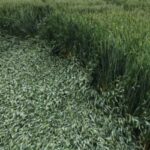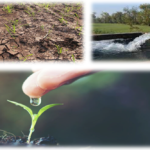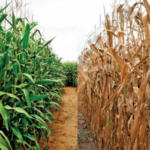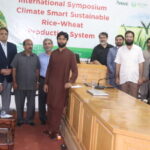ADVERSE IMPACTS OF CLIMATE CHANGE ON AGRICULTURAL SOIL
Climatic change is the severe change in the yearly weather conditions mainly due to pollution caused by human activities. It is causing increased earth temperature and affecting agriculture on large scale. Major impacts of climate change are not only on the health of the trees but also on the soil. Eric C. Brevik et al., 2013 reported that climate change will affect global precipitation patterns and the environment including soil in the coming years. Surely, that’s happening. But how is it going? That will be discussed here!
Soil, Climate Change & Food security:
Soils are very important to agriculture and food security. Soil composition is highly deteriorating as a result of climate change. Nutrients cycling, ecosystem respiration, and storage of carbon in forests are getting hugely impacted by climatic fluctuations. This alarming situation of climate change will threaten food security by influencing soil properties and processes.
In which ways climate change is impacting agricultural soil?
Soils are linked closely to climate systems by carbon, nitrogen, and hydrologic cycles. That’s why climate change is deeply affecting the soil composition, processes, and properties. Climate change by influencing the nutrients cycle is lowering soil organic matter levels. Winds, floods, and rains due to the melting of glaciers as a result of increased earth temperature are increasing soil erosion.
Shortly, climate change is depriving the soil of its nutrients and making it unfertile for agricultural purposes. There are many ways by which increased temperature or climate change is affecting agricultural soil. These include:
- A high temperature interferes in the cycling of nutrients and carbon by modifying the habitat of soil biota. It may influence diversity, abundance, and species adversely.
- Increased temperature of the atmosphere vaporizes the soil moisture and makes it dehydrated. This lack of moisture and increased temperature decreases crop production and shoot up the decomposition of soil organic matter. Furthermore, changes in the soil’s organic matter, composition, and density because of climate change can also affect the water holding capacity of the soil.
- The FAO of the United Nations published a map in which it was shown that about 30cm of topsoil contains double the amount of carbon than the entire atmosphere. Other than the sea, the earth’s soil is the second largest natural carbon sink that captures CO2 from the atmosphere. But as soil organic matter is decomposing rapidly, more CO2 after C decomposition is emitted to the atmosphere ultimately decreasing the soil organic C stocks.
- Increased temperature tends to melt glaciers and cause heavy rainfall patterns. Such intense rainfall patterns lead to heavy soil erosion and damage to the soil layers. Moreover, high precipitation also causes waterlogging. But how will it impact the soil? It will block the supply of oxygen to the plant roots and enhance the emission of nitrous oxide and CH4.
- Soil chemistry and biology are also getting highly affected by varying rainfall patterns either increasing or decreasing rain events.
- Longer periods of heat and drought between the periods of precipitation can result in soil wilting, desiccation, and salinization. These things decrease the crop yield and livelihood ultimately.
Final Words:
In light of the above discussion, climatic fluctuations are unavoidable and constantly causing serious damage to agriculture. One most important aspect being affected by this is the agricultural soil. However, we can’t tackle the climatic change but it can be managed through wise practices. For that, one known way is to maintain soil organic matter. This will help to decrease intense rainfall patterns and droughts, which will become more frequent and adverse.

Author
Rikza Awan
Agriculture Specialist
Top Blogs




